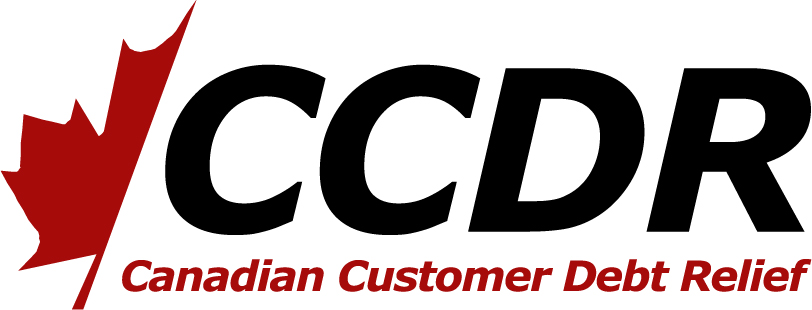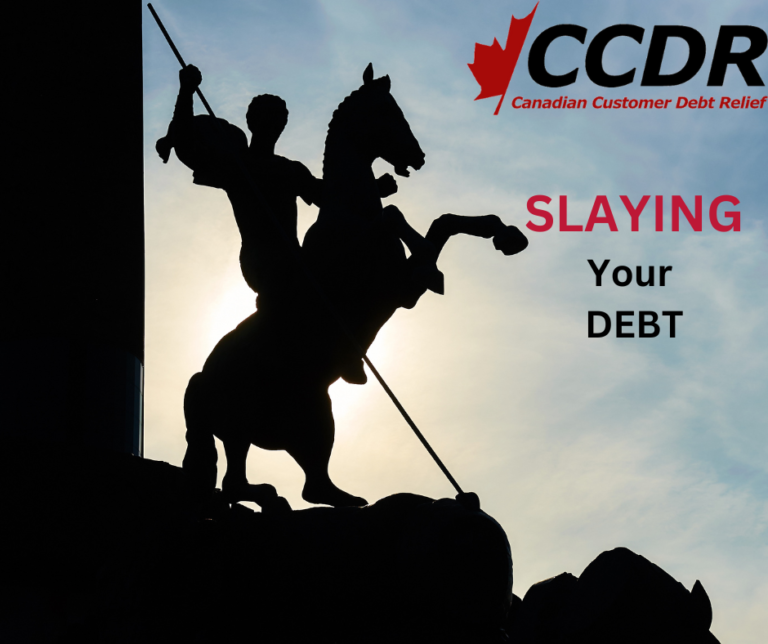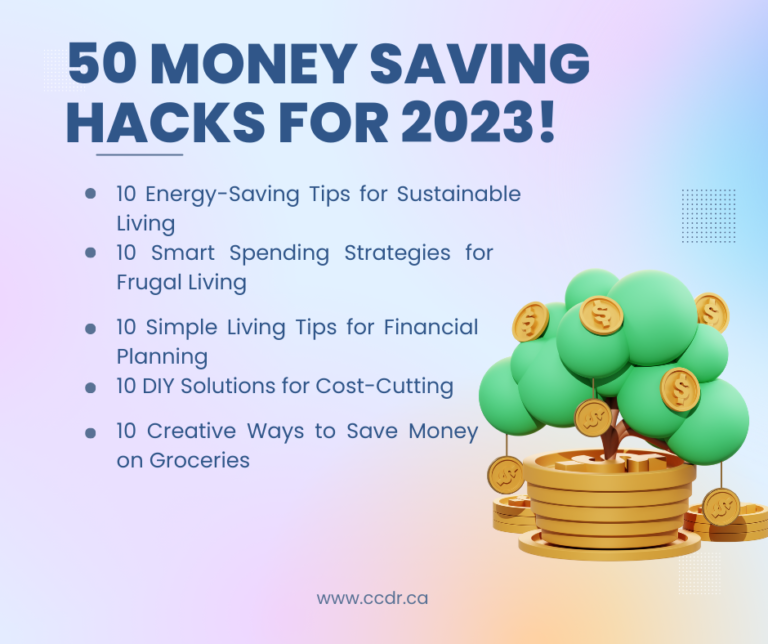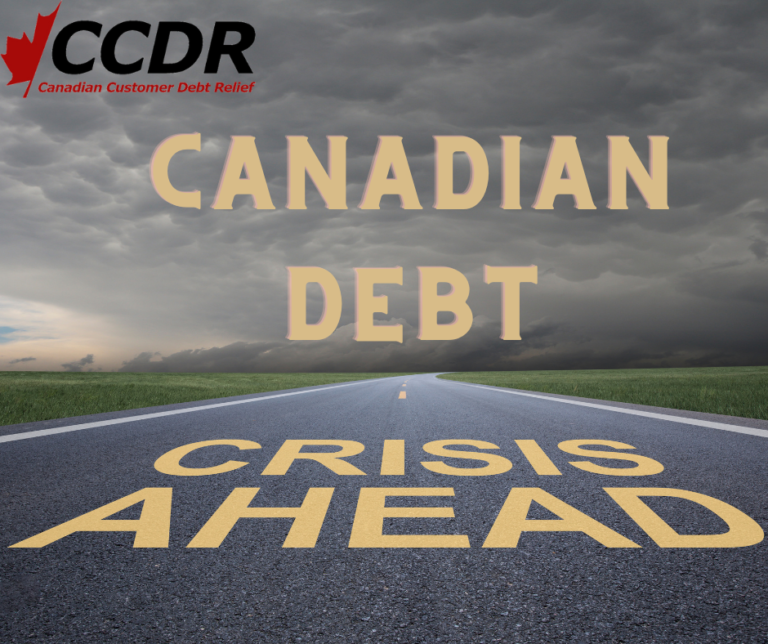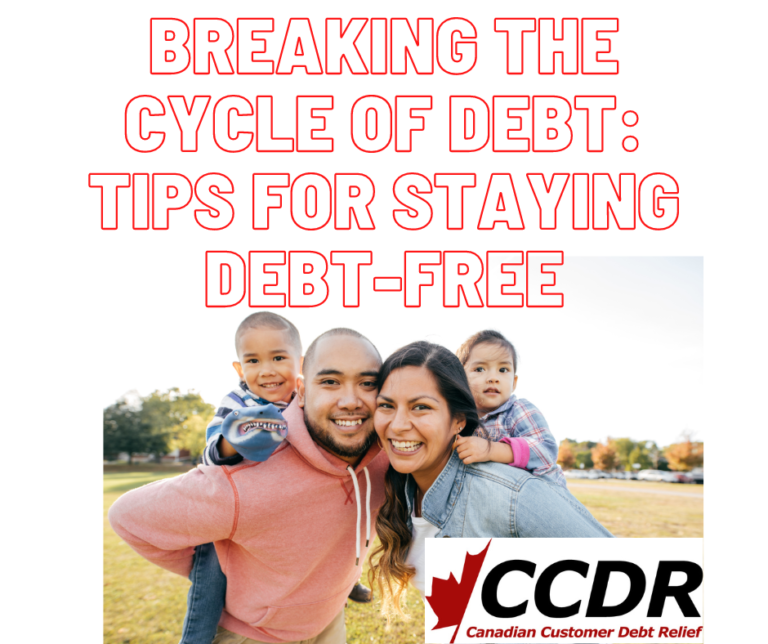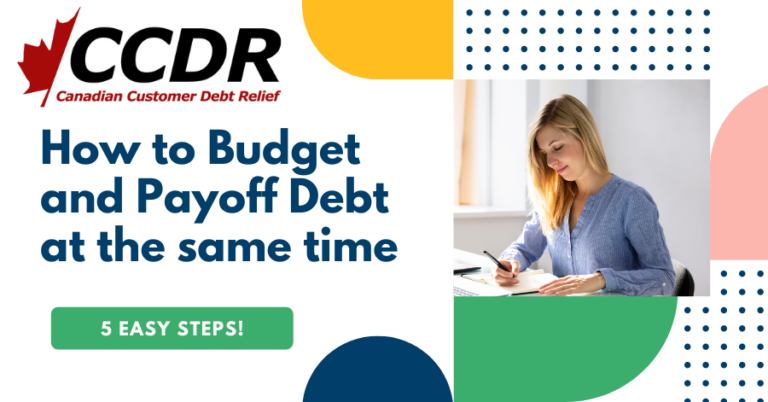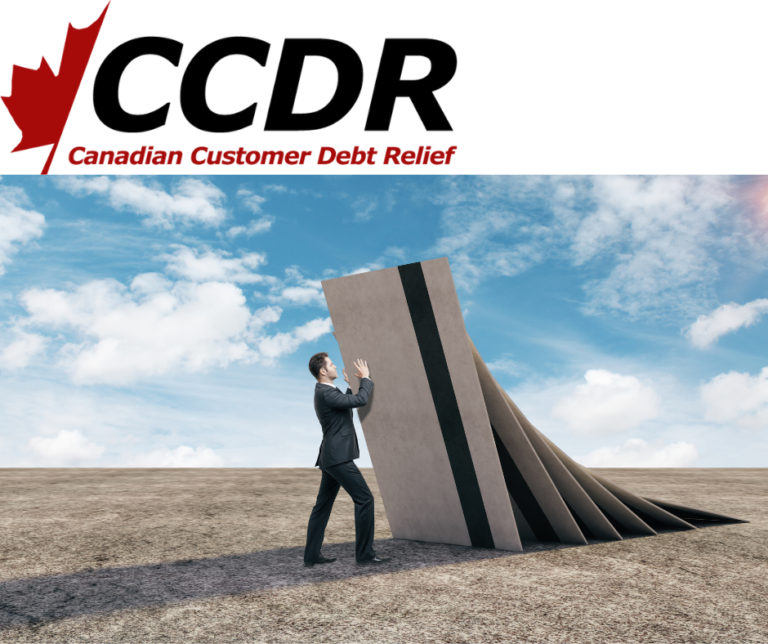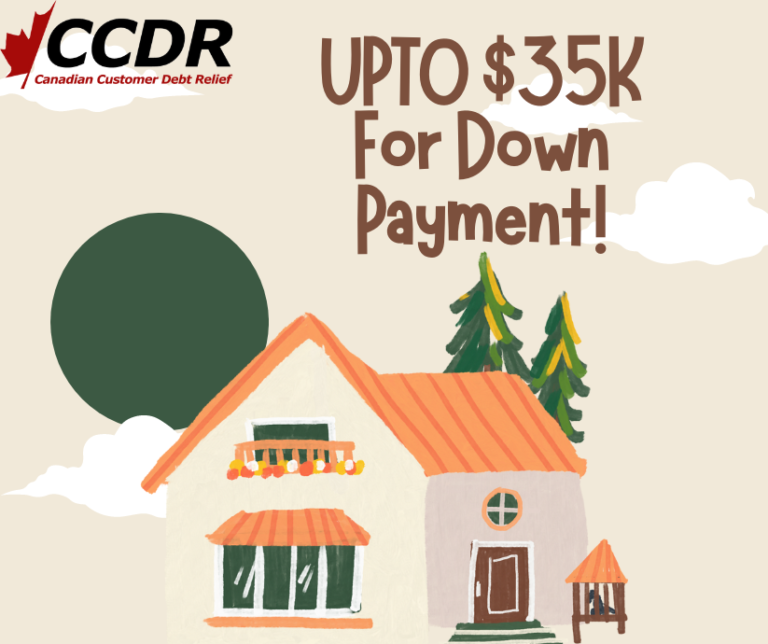Live Large on Less: How to Save Money at Home in 2023
In today’s fast-paced world, everyone wants to live a comfortable life, but often that comes with a price tag. However, living large on less is not an impossible task. By making small changes in our daily routines and habits, we can save a significant amount of money without compromising our lifestyle. In this article, we will discuss some effective ways to save money at home in 2023.
- Set Financial Goals to Live Large on Less
- Create a Budget Plan
- Cut Down on Your Utility Bills
- Use Energy-Efficient Appliances
- Save on Your Grocery Bill
- Practice DIY and Repurpose
- Make Use of Free Entertainment
- FAQs on How to Live Large on Less
Set Financial Goals to Live Large on Less
- Understand your expenses and income
- Identify areas where you can cut down expenses
- Set realistic goals and track your progress
- Create a Budget Plan
- Make a list of all your expenses
- Categorize them into essentials and non-essentials
- Allocate a specific amount for each category
- Review and adjust your budget plan regularly
- Cut Down on Your Utility Bills
- Turn off lights and appliances when not in use
- Use natural light and ventilation as much as possible
- Replace incandescent bulbs with LED bulbs
- Unplug electronics when not in use
- Use Energy-Efficient Appliances
- Look for appliances with an Energy Star rating
- Use a microwave instead of an oven
- Use a dishwasher only when it’s full
- Use a clothesline instead of a dryer
- Save on Your Grocery Bill
- Make a grocery list and stick to it
- Buy in bulk and take advantage of sales and discounts
- Cook meals at home instead of eating out
- Shop at local farmers’ markets for fresh produce
- Practice DIY and Repurpose
- Repair instead of replacing broken items
- Repurpose old items for a new purpose
- Learn basic DIY skills for simple repairs
- Use reusable bags and containers instead of disposable ones
- Make Use of Free Entertainment
- Borrow books and movies from the library
- Explore free events and activities in your community
- Spend time outdoors for exercise and fresh air
- Host potlucks and game nights with friends and family
FAQs on How to Live Large on Less:
Q: Is it possible to live large on less? A: Yes, by making small changes in our daily routines and habits, we can save a significant amount of money without compromising our lifestyle.
Q: What are some effective ways to save money at home in 2023? A: Some effective ways to save money at home in 2023 are setting financial goals, creating a budget plan, cutting down on utility bills, using energy-efficient appliances, saving on grocery bills, practicing DIY and repurposing, and making use of free entertainment.
Q: How can I cut down on my utility bills? A: You can cut down on your utility bills by turning off lights and appliances when not in use, using natural light and ventilation, replacing incandescent bulbs with LED bulbs, and unplugging electronics when not in use.
Conclusion:
Saving money doesn’t mean sacrificing your lifestyle. By implementing the above tips and tricks, you can live large on less in 2023. It’s all about making small changes in your daily routines and habits that can add up
Slaying Your Debt: A Step-by-Step Guide for Canadians
-
Table of Contents
- Introduction
- How to Create a Budget to Slay Your Debt: A Step-by-Step Guide for Canadians
- Debt Consolidation: What You Need to Know to Reduce Your Debt in Canada
- Credit Counseling: A Guide to Finding the Right Debt Relief Program for Canadians
- The Debt Snowball Method: How to Pay Off Your Debt Quickly and Easily
- The Debt Avalanche Method: A Step-by-Step Guide to Reducing Your Debt in Canada
- Conclusion
“Take Control of Your Finances and Slay Your Debt with Our Step-by-Step Guide!”
Introduction
Are you struggling with debt? Are you looking for a way to get out of debt and stay out of debt? If so, Slaying Your Debt: A Step-by-Step Guide for Canadians is the perfect book for you. This comprehensive guide provides Canadians with the tools and strategies they need to take control of their finances and get out of debt. It covers everything from budgeting and debt repayment strategies to understanding credit and building wealth. With this book, you will learn how to create a plan to pay off your debt and achieve financial freedom.
How to Create a Budget to Slay Your Debt: A Step-by-Step Guide for Canadians
Are you ready to slay your debt and take control of your finances? It’s time to create a budget that will help you reach your financial goals. With a little bit of planning and dedication, you can make a budget that will help you pay off your debt and get back on track. Here’s a step-by-step guide to creating a budget that will help you slay your debt.
Step 1: Calculate Your Income
The first step to creating a budget is to calculate your income. This includes your salary, any bonuses, investments, and other sources of income. Make sure to include all sources of income, even if it’s just a few dollars here and there.
Step 2: Calculate Your Expenses
The next step is to calculate your expenses. This includes your rent or mortgage, utilities, groceries, transportation, and any other expenses you have. Make sure to include all of your expenses, even if they’re small.
Step 3: Track Your Spending
Once you’ve calculated your income and expenses, it’s time to track your spending. This means keeping track of every purchase you make, no matter how small. This will help you identify areas where you can cut back and save money.
Step 4: Set Financial Goals
Now that you’ve tracked your spending, it’s time to set financial goals. This could include paying off your debt, saving for a vacation, or building an emergency fund. Make sure to set realistic goals that you can actually achieve.
Step 5: Create a Budget
Now that you’ve set your financial goals, it’s time to create a budget. Start by allocating a certain amount of money to each of your goals. Make sure to leave some room for fun and entertainment, but don’t forget to save for your future.
Step 6: Stick to Your Budget
The last step is to stick to your budget. This means tracking your spending and making sure you’re staying on track. If you find yourself slipping, don’t be too hard on yourself. Just make sure to get back on track as soon as possible.
Creating a budget can be intimidating, but it doesn’t have to be. With a little bit of planning and dedication, you can create a budget that will help you slay your debt and get back on track. So take the first step today and start creating a budget that will help you reach your financial goals.
Debt Consolidation: What You Need to Know to Reduce Your Debt in Canada
Are you feeling overwhelmed by debt? You’re not alone. Many Canadians are struggling with debt and are looking for ways to reduce it. Debt consolidation is one option that can help you get back on track.
Debt consolidation is a process that combines multiple debts into one loan with a lower interest rate. This can help you save money on interest and make it easier to manage your payments. It can also help you pay off your debt faster.
When considering debt consolidation, it’s important to understand the different types of loans available. There are secured and unsecured loans, and each has its own advantages and disadvantages. Secured loans are backed by collateral, such as a car or home, and typically have lower interest rates. Unsecured loans are not backed by collateral and typically have higher interest rates.
It’s also important to understand the terms of the loan. Make sure you understand the repayment schedule, interest rate, and any fees associated with the loan. You should also make sure you can afford the monthly payments.
Debt consolidation can be a great way to reduce your debt and get back on track. But it’s important to do your research and make sure you understand the terms of the loan before you commit. With the right plan and a little bit of discipline, you can reduce your debt and get back on the path to financial freedom.
Credit Counseling: A Guide to Finding the Right Debt Relief Program for Canadians
Are you feeling overwhelmed by debt? You’re not alone. Many Canadians are struggling to make ends meet and are looking for ways to get out of debt. Credit counseling can be a great way to get the help you need to get back on track.
Credit counseling is a form of debt relief that can help you manage your finances and get out of debt. It’s a process that involves working with a credit counselor to develop a plan to pay off your debt. The counselor will help you understand your financial situation, create a budget, and develop a plan to pay off your debt.
When looking for a credit counseling program, it’s important to find one that is right for you. Look for a program that is accredited by the Canadian Credit Counselling Association (CCCA). This will ensure that the program is reputable and has the experience and expertise to help you.
It’s also important to find a program that is tailored to your needs. Look for a program that offers personalized advice and support. A good program will provide you with the tools and resources you need to make a plan to pay off your debt.
Finally, make sure you understand the fees associated with the program. Some programs may charge a fee for their services, so make sure you understand what you’re paying for.
Credit counseling can be a great way to get the help you need to get out of debt. With the right program, you can get the support and guidance you need to make a plan to pay off your debt and get back on track. Don’t let debt overwhelm you – take control of your finances and get the help you need to get out of debt.
The Debt Snowball Method: How to Pay Off Your Debt Quickly and Easily
Are you feeling overwhelmed by debt? Do you feel like you’ll never be able to pay it off? Don’t worry, you’re not alone. Millions of people are in the same boat. But there is hope! The debt snowball method is a simple and effective way to pay off your debt quickly and easily.
The debt snowball method is based on the idea that you should pay off your smallest debt first. This will give you a sense of accomplishment and motivate you to keep going. Once you’ve paid off your smallest debt, you can move on to the next one. This process will continue until all of your debts are paid off.
The debt snowball method is a great way to stay motivated and keep track of your progress. Every time you pay off a debt, you’ll be one step closer to becoming debt-free. You’ll also be able to see how much money you’re saving by not having to pay interest on your debts.
The debt snowball method is also a great way to save money. By paying off your smallest debt first, you’ll be able to save money on interest payments. This will help you pay off your debt faster and save you money in the long run.
The debt snowball method is a great way to get out of debt quickly and easily. It’s a simple and effective way to stay motivated and keep track of your progress. So don’t give up hope! With the debt snowball method, you can become debt-free in no time.
The Debt Avalanche Method: A Step-by-Step Guide to Reducing Your Debt in Canada
Are you feeling overwhelmed by your debt? You’re not alone. Many Canadians are struggling with debt, and it can be hard to know where to start when it comes to reducing it. That’s why we’re here to help. The debt avalanche method is a great way to reduce your debt and get back on track. Here’s a step-by-step guide to help you get started.
Step 1: Make a List of Your Debts
The first step is to make a list of all your debts. Include the name of the creditor, the amount owed, the interest rate, and the minimum payment. This will help you get a better understanding of your financial situation and make it easier to prioritize your debts.
Step 2: Calculate Your Debt Avalanche
Once you have your list of debts, you can calculate your debt avalanche. This is the amount of money you need to pay each month to pay off your debts in the shortest amount of time. To do this, you’ll need to add up the minimum payments for all your debts and then subtract that amount from your total monthly income. The difference is the amount you can put towards your debt avalanche.
Step 3: Prioritize Your Debts
Now that you know how much you can put towards your debt avalanche, it’s time to prioritize your debts. Start by paying off the debt with the highest interest rate first. This will save you the most money in the long run. Once you’ve paid off that debt, move on to the next one with the highest interest rate and so on.
Step 4: Make Your Payments
Now that you’ve prioritized your debts, it’s time to make your payments. Make sure you make your payments on time and in full each month. This will help you stay on track and avoid late fees and other penalties.
Step 5: Celebrate Your Success
Once you’ve paid off your debts, it’s time to celebrate! Take a moment to appreciate all the hard work you’ve done and the progress you’ve made. You’ve taken a big step towards financial freedom and that deserves to be celebrated.
The debt avalanche method is a great way to reduce your debt and get back on track. With a little bit of planning and dedication, you can make a plan to pay off your debts and start living a debt-free life. So don’t give up – you can do this!
Conclusion
Slaying Your Debt: A Step-by-Step Guide for Canadians is an invaluable resource for anyone looking to get out of debt and take control of their finances. It provides a comprehensive overview of the different debt repayment strategies available, as well as practical advice on how to create a budget, manage expenses, and build an emergency fund. With its clear and concise language, this guide is an essential tool for anyone looking to take charge of their financial future.
2023 Money-Saving Hacks for Frugal Living
-
Table of Contents
“2023: Unlock the Secrets to Frugal Living and Save Money Now!”
Introduction
Are you looking for ways to save money in 2023? With the cost of living on the rise, it’s important to find ways to save money and live frugally. Fortunately, there are plenty of money-saving hacks that can help you stretch your budget and make the most of your money. In this article, we’ll share 2023 money-saving hacks for frugal living that can help you save money and live a more financially secure life. From budgeting tips to smart shopping strategies, these hacks will help you make the most of your money and live a more frugal lifestyle.
10 Energy-Saving Tips for Sustainable Living in 2023
1. Invest in energy-efficient appliances: In 2023, energy-efficient appliances will be more affordable and widely available. Look for appliances with the Energy Star label, which indicates that they meet the highest standards for energy efficiency.
2. Install solar panels: Solar panels are becoming increasingly popular and cost-effective. Installing solar panels on your roof can help you save money on your energy bills and reduce your carbon footprint.
3. Use LED light bulbs: LED light bulbs are more energy-efficient than traditional incandescent bulbs. They also last longer, so you won’t have to replace them as often.
4. Unplug electronics when not in use: Even when electronics are turned off, they can still draw power. Unplugging electronics when not in use can help you save energy and money.
5. Install a programmable thermostat: Programmable thermostats allow you to set different temperatures for different times of the day. This can help you save energy by only heating or cooling your home when you need it.
6. Insulate your home: Proper insulation can help keep your home warm in the winter and cool in the summer. This can help you save energy and money on your energy bills.
7. Use natural light: Natural light is free and can help you save energy. Open your curtains and blinds during the day to let in natural light and reduce your need for artificial lighting.
8. Plant trees: Trees can help reduce energy costs by providing shade and blocking wind. Planting trees around your home can help you save energy and money.
9. Use a clothesline: Instead of using a dryer, hang your clothes on a clothesline to dry. This can help you save energy and money on your energy bills.
10. Buy local: Buying local products can help reduce your carbon footprint. Look for locally-sourced food and other products to help reduce your energy consumption.
10 Smart Spending Strategies for Frugal Living in 2023
1. Make a budget and stick to it: The most important step to living frugally is to create a budget and stick to it. This will help you stay on track with your spending and ensure that you are not overspending.
2. Shop around for the best deals: Don’t just settle for the first price you see. Take the time to shop around and compare prices to get the best deal.
3. Buy in bulk: Buying in bulk can save you money in the long run. Look for bulk discounts and stock up on items that you use regularly.
4. Use coupons and discounts: Coupons and discounts can help you save money on everyday items. Take the time to look for coupons and discounts before you make a purchase.
5. Buy used items: Buying used items can save you a lot of money. Look for second-hand stores or online marketplaces to find great deals.
6. Make your own meals: Eating out can be expensive. Instead, try making your own meals at home. This will save you money and you can control the ingredients you use.
7. Cut back on entertainment expenses: Entertainment expenses can add up quickly. Try to find free or low-cost activities to do instead of spending money on expensive entertainment.
8. Take advantage of free services: There are many free services available online that can help you save money. Take advantage of these services to save money on things like streaming services, online courses, and more.
9. Use cash instead of credit cards: Credit cards can be tempting, but they can also lead to overspending. Try to use cash instead to help you stay on budget.
10. Invest in yourself: Investing in yourself can help you save money in the long run. Take the time to learn new skills or take classes that can help you advance in your career. This can help you earn more money and save more in the future.
10 Simple Living Tips for Financial Planning in 2023
1. Make a budget and stick to it. Start by tracking your spending for a month and then create a budget that works for you. Make sure to include savings in your budget.
2. Pay off debt. Paying off debt is one of the best ways to improve your financial situation. Make a plan to pay off your debt as quickly as possible.
3. Automate your savings. Set up automatic transfers from your checking account to your savings account each month. This will help you save without having to think about it.
4. Invest in yourself. Investing in yourself is one of the best investments you can make. Invest in your education, skills, and career to increase your earning potential.
5. Live below your means. Don’t buy things you don’t need and don’t spend more than you make. Live within your means and save the rest.
6. Take advantage of tax breaks. Make sure you’re taking advantage of all the tax breaks available to you. This can help you save money and reduce your tax bill.
7. Start a side hustle. Consider starting a side hustle to increase your income. This can be anything from freelancing to selling items online.
8. Build an emergency fund. An emergency fund is essential for financial security. Aim to save at least three to six months of living expenses in an emergency fund.
9. Take advantage of employer benefits. Many employers offer benefits such as retirement plans and health insurance. Make sure you’re taking advantage of these benefits to save money.
10. Get professional advice. If you’re feeling overwhelmed by your finances, consider getting professional advice from a financial planner or accountant. They can help you create a plan to reach your financial goals.
10 DIY Solutions for Cost-Cutting in 2023
1. Invest in Automation: Automation can help reduce costs by streamlining processes and eliminating manual labor. Investing in automation can help you save money in the long run.
2. Outsourcing Non-Core Tasks: Outsourcing non-core tasks can help you save money by allowing you to focus on core tasks and reduce overhead costs.
3. Leverage Cloud Computing: Cloud computing can help you reduce costs by eliminating the need for expensive hardware and software.
4. Utilize Open Source Software: Open source software can help you save money by eliminating the need to purchase expensive software licenses.
5. Negotiate Better Deals: Negotiating better deals with suppliers and vendors can help you save money by getting better prices for the same products and services.
6. Reduce Energy Consumption: Reducing energy consumption can help you save money by reducing your energy bills.
7. Invest in Employee Training: Investing in employee training can help you save money by increasing employee productivity and reducing turnover.
8. Implement Lean Manufacturing: Lean manufacturing can help you reduce costs by eliminating waste and increasing efficiency.
9. Utilize Data Analytics: Data analytics can help you save money by providing insights into customer behavior and trends.
10. Invest in Cybersecurity: Investing in cybersecurity can help you save money by preventing data breaches and other cyber threats.
10 Creative Ways to Save Money on Groceries in 2023
1. Take advantage of store loyalty programs. Many grocery stores offer loyalty programs that can help you save money on groceries. Look for discounts, coupons, and other special offers that you can use to save money.
2. Buy in bulk. Buying in bulk can help you save money on groceries. Look for items that you use often and buy them in larger quantities. This can help you save money in the long run.
3. Shop at discount stores. Discount stores like Aldi and Lidl offer great deals on groceries. You can often find items for much cheaper than you would at a regular grocery store.
4. Buy generic brands. Generic brands are often much cheaper than name brands. Look for generic versions of items that you use often and save money.
5. Use coupons. Coupons are a great way to save money on groceries. Look for coupons in the newspaper, online, or in-store circulars.
6. Buy in season. Fruits and vegetables that are in season are often much cheaper than those that are out of season. Look for seasonal produce and save money.
7. Buy frozen. Frozen fruits and vegetables are often much cheaper than fresh ones. Look for frozen versions of items that you use often and save money.
8. Buy store brands. Store brands are often much cheaper than name brands. Look for store brands of items that you use often and save money.
9. Buy in bulk online. Buying in bulk online can help you save money on groceries. Look for online stores that offer bulk discounts and save money.
10. Meal plan. Meal planning can help you save money on groceries. Plan out your meals for the week and buy only what you need. This can help you save money and reduce food waste.
Conclusion
2023 Money-Saving Hacks for Frugal Living is a great way to save money and live a more frugal lifestyle. By taking advantage of the various money-saving hacks, you can save money on everyday expenses, such as groceries, utilities, and entertainment. Additionally, you can save money on larger purchases, such as cars and vacations. With a little bit of effort and creativity, you can make the most of your money and live a more frugal lifestyle.
Consumer Debt Crisis in Canada: Understanding the Issue and Finding Solutions
As the cost of living continues to rise in Canada, more and more consumers are finding themselves in financial trouble. The Consumer Debt Crisis in Canada is a growing problem that affects millions of people every year. In this article, we will explore the root causes of this crisis, the impact it has on Canadians, and what can be done to prevent it.
What is Consumer Debt?
Consumer debt is the total amount of money that a person owes on their credit cards, loans, and other forms of borrowing. This type of debt is also known as household debt because it is often used to finance the purchase of everyday goods and services. While it is normal for Canadians to have some level of debt, it becomes a problem when it becomes unmanageable.
The State of Consumer Debt in Canada
According to a report by the Bank of Canada, the level of household debt in Canada has risen steadily over the past decade. In fact, as of 2020, Canadians owe a total of $2.2 trillion in consumer debt. This figure includes credit card debt, auto loans, and other forms of borrowing. With such a large amount of debt, it is not surprising that many Canadians are struggling to make ends meet.
Causes of Consumer Debt in Canada
There are several reasons why consumer debt has become such a pressing issue in Canada. One of the main reasons is the high cost of living. As the cost of housing, food, and other necessities continues to rise, many Canadians are finding it difficult to keep up with their expenses. Additionally, low wages and job instability have made it difficult for many people to maintain a steady income.
Another contributing factor to consumer debt in Canada is the easy availability of credit. Banks and other financial institutions are quick to offer credit to consumers, often without considering their ability to repay the debt. As a result, many people end up with high levels of debt that they are unable to repay.
The Impact of Consumer Debt on Canadians
Consumer debt has a significant impact on Canadians’ financial well-being. High levels of debt can lead to stress, anxiety, and depression. It can also make it difficult for people to make ends meet, leading to financial instability and even bankruptcy.
Consumer debt also has a broader impact on the Canadian economy. When consumers are unable to pay their debts, it can lead to a decrease in spending and a slowdown in economic growth. This, in turn, can lead to job losses and a decrease in overall economic activity.
Solutions to the Consumer Debt Crisis
To address the issue of consumer debt in Canada, there are several solutions that can be implemented. One solution is to increase financial literacy among Canadians. By teaching people about personal finance and money management, they can better understand how to manage their debt and avoid financial trouble.
Another solution is to regulate the lending practices of banks and other financial institutions. By requiring lenders to consider a borrower’s ability to repay a debt before offering credit, it can help prevent consumers from taking on more debt than they can handle.
Finally, providing support to Canadians who are struggling with debt can also help. This can include debt counseling, financial planning services, and other forms of assistance.
Conclusion
The Consumer Debt Crisis in Canada is a complex issue that affects millions of people every year. Understanding the root causes of the problem and finding solutions to address it is essential for improving the financial well-being of Canadians. By increasing financial literacy, regulating lending practices, and providing support to those in need, we can by increasing financial literacy, regulating lending practices, and providing support to those in need, we can help prevent the cycle of debt from continuing. It is important for Canadians to take a proactive approach to manage their debt and seek help if they are struggling. With the right strategies and support in place, it is possible to overcome the Consumer Debt Crisis in Canada.
FAQs:
Q1. How can I tell if I have too much debt? A1. If your debt is taking up a significant portion of your income and you are struggling to make ends meet, you may have too much debt. It is important to assess your debt-to-income ratio and create a plan to manage your debt.
Q2. What is a debt-to-income ratio? A2. A debt-to-income ratio is a measure of how much debt you have compared to your income. It is calculated by dividing your total monthly debt payments by your gross monthly income. A high debt-to-income ratio can indicate that you are taking on too much debt.
Q3. What is a credit score? A3. A credit score is a numerical representation of your creditworthiness. It is calculated based on your credit history, including your payment history, the amount of debt you have, and the length of your credit history.
Q4. How can I improve my credit score? A4. You can improve your credit score by paying your bills on time, keeping your credit card balances low, and avoiding opening too many new accounts at once. It is also important to review your credit report regularly to ensure that there are no errors or fraudulent accounts.
Q5. Can debt consolidation help me manage my debt? A5. Debt consolidation can be a useful tool for managing debt, as it allows you to combine multiple debts into one monthly payment. However, it is important to consider the costs and fees associated with debt consolidation before making a decision. It is also important to address the underlying issues that led to the accumulation of debt in the first place.
5 Surprising Habits That Are Keeping You in Debt
Are you tired of living paycheck to paycheck and always struggling to make ends meet? Do you feel like no matter how much you earn, you never seem to have enough money to get ahead? If so, you’re not alone. Many people find themselves in debt because of bad habits that they don’t even realize they have. In this article, we’ll explore five surprising habits that may be keeping you in debt, and provide actionable tips to help you break these habits and get on the path to financial freedom.
- Ignoring your credit score
Your credit score is a number that ranges from 300 to 850 and is used by lenders to determine your creditworthiness. A good credit score can help you get approved for loans and credit cards with favorable terms and lower interest rates, while a bad credit score can make it difficult to get approved for credit or result in higher interest rates and fees. Despite the importance of credit scores, many people simply ignore them or don’t know what their score is.
To break this habit, start by checking your credit score and monitoring it regularly. You can get a free credit report from each of the three major credit bureaus (Equifax, Experian, and TransUnion) once a year at AnnualCreditReport.com. Look for errors or inaccuracies in your report, and dispute them with the credit bureau if necessary. Pay your bills on time and keep your credit card balances low to improve your score over time.
- Impulse buying
Impulse buying is the act of making purchases on a whim without much thought or consideration. It’s easy to get caught up in the moment and buy things you don’t really need, especially with the convenience of online shopping and the prevalence of credit cards. However, impulse buying can quickly lead to overspending and debt.
To break this habit, make a budget and stick to it. Before making any non-essential purchases, ask yourself if you really need the item and if you can afford it. Consider waiting a day or two before making a purchase to give yourself time to think it over. You can also unsubscribe from email lists and unfollow social media accounts that tempt you to buy things you don’t need.
- Not having an emergency fund
An emergency fund is a savings account that is specifically set aside for unexpected expenses, such as car repairs or medical bills. Without an emergency fund, you may be forced to rely on credit cards or loans to cover these expenses, which can lead to debt.
To break this habit, start by setting a goal for your emergency fund. A good rule of thumb is to have three to six months’ worth of living expenses saved. Set up automatic transfers from your checking account to your emergency fund each month, so you don’t have to remember to do it yourself. If you have a windfall, such as a tax refund or bonus, consider putting some or all of it into your emergency fund.
- Using credit cards for everything
Credit cards can be a useful tool for building credit and earning rewards, but using them for everything can be a slippery slope to debt. If you don’t pay your credit card balances in full each month, you can quickly rack up high-interest debt and end up paying much more for the items you purchased.
To break this habit, consider using cash or a debit card for everyday purchases. Only use your credit card for items that you can pay off in full each month. If you already have credit card debt, focus on paying it off as quickly as possible. Consider transferring your balances to a card with a lower interest rate or a 0% APR introductory period to save on interest charges.
- Keeping up with the Joneses
Keeping up with the Joneses is the act of trying to match or exceed the lifestyles of others, even if you can’t afford it. It’s easy to feel like you need to have the latest gadgets, wear the trendiest clothes, or take exotic vacations to keep up with your friends and colleagues, but this mentality can quickly lead to overspending and debt.
To break this habit, focus on your own financial goals and values. Consider what’s truly important to you and what you want to achieve with your money. Don’t compare yourself to others or feel pressured to spend beyond your means. Find ways to enjoy a life that doesn’t involve spending a lot of money, such as spending time with loved ones, exploring nature, or pursuing hobbies that don’t require expensive equipment or memberships.
Conclusion
Breaking these habits won’t happen overnight, but with persistence and discipline, you can make significant progress toward getting out of debt and achieving financial freedom. Start by identifying which habits are holding you back and taking small steps to change them. Remember that financial success is a journey, not a destination, and every positive action you take today can help you create a better future.
FAQs
- Can I improve my credit score quickly?
Improving your credit score takes time and effort, but there are some steps you can take to see results in as little as a few months. Paying your bills on time and keeping your credit card balances low are two of the most effective ways to improve your score.
- How much should I save for an emergency fund?
A good rule of thumb is to save three to six months’ worth of living expenses in your emergency fund. This can help you cover unexpected expenses without relying on credit cards or loans.
- Should I cancel my credit cards to avoid debt?
Canceling credit cards can actually hurt your credit score by reducing your available credit and increasing your credit utilization ratio. Instead, focus on using credit responsibly by only charging what you can afford to pay off each month.
- How can I resist impulse buying?
One effective strategy for resisting impulse buying is to create a budget and stick to it. Before making any non-essential purchases, ask yourself if you really need the item and if you can afford it. Consider waiting a day or two before making a purchase to give yourself time to think it over.
- What’s the best way to get out of credit card debt?
The best way to get out of credit card debt is to make a plan and stick to it. Start by making a budget and cutting back on unnecessary expenses. Focus on paying off your highest-interest debt first while making the minimum payments on your other debts. Consider consolidating your debt with a balance transfer credit card or personal loan to save on interest charges.
Breaking the Cycle of Debt: Tips for Staying Debt-Free
Debt is a vicious cycle that can be difficult to break out of once it starts. It can be overwhelming to try and figure out how to get back on track and stay debt-free, but it is possible. In this article, we will provide you with tips and strategies for breaking the cycle of debt and staying debt-free.
Assess Your Current Debt Situation
The first step in breaking the cycle of debt is to assess your current situation. Take a look at how much debt you have and where it is coming from. This will help you determine what steps you need to take to get back on track. Make a list of all of your debts, including credit card debt, student loans, car loans, and any other debts you may have.
Create a Budget
Once you have assessed your debt situation, it is time to create a budget. A budget will help you keep track of your expenses and ensure that you have enough money to pay off your debts. Start by listing all of your income, including your salary, any side hustles, and any other sources of income. Then, list all of your expenses, including rent or mortgage payments, utilities, transportation, food, and any other expenses you may have. Be sure to include any debt payments you need to make.
Prioritize Your Debts
Next, prioritize your debts. Start by paying off the debt with the highest interest rate first. This will help you save money in the long run and get out of debt faster. You can also consider consolidating your debts into one payment to make it easier to manage.
Cut Expenses
In order to pay off your debts, you may need to cut expenses. Start by looking for ways to reduce your monthly expenses, such as cutting back on eating out, buying generic brands, and reducing your entertainment budget. You can also consider getting a side hustle to bring in extra income.
Increase Your Income
Increasing your income is another way to help you get out of debt and stay debt-free. Consider getting a second job, freelancing, or starting a side business to bring in extra income. You can also ask for a raise or negotiate a higher salary if you are currently employed.
Stick to Your Plan
Breaking the cycle of debt takes time and discipline. It is important to stick to your plan and stay focused on your goal of becoming debt-free. Surround yourself with positive influences and people who support your goal. If you find yourself struggling, don’t be afraid to seek help from a financial advisor or debt counselor.
Conclusion
Breaking the cycle of debt can be a challenging process, but it is possible. By assessing your debt situation, creating a budget, prioritizing your debts, cutting expenses, increasing your income, and sticking to your plan, you can become debt-free and stay that way. Take control of your finances and start taking steps towards financial freedom today.
10 Proven Ways to Get Out of Debt Faster in Canada
-
Table of Contents
- Introduction
- How to Create a Debt Repayment Plan to Get Out of Debt Faster in Canada
- How to Use Credit Cards to Your Advantage to Get Out of Debt Faster in Canada
- How to Negotiate with Creditors to Get Out of Debt Faster in Canada
- How to Take Advantage of Government Programs to Get Out of Debt Faster in Canada
- How to Utilize Debt Consolidation to Get Out of Debt Faster in Canada
- Conclusion
“Start Your Debt-Free Journey Today with 10 Proven Ways to Get Out of Debt Faster in Canada!”
Introduction
Are you struggling with debt in Canada? If so, you’re not alone. According to a recent survey, nearly half of Canadians are in debt, with the average household owing $1.77 for every dollar of disposable income. Fortunately, there are ways to get out of debt faster. In this article, we’ll discuss 10 proven ways to get out of debt faster in Canada. From budgeting and debt consolidation to debt settlement and credit counseling, we’ll cover all the options available to help you get out of debt faster. So, let’s get started!
How to Create a Debt Repayment Plan to Get Out of Debt Faster in Canada
Are you looking for a way to get out of debt faster in Canada? If so, creating a debt repayment plan is a great way to get started. A debt repayment plan is a strategy that helps you pay off your debt in a timely and organized manner. It can help you stay on track and make sure you don’t miss any payments. Here’s how to create a debt repayment plan to get out of debt faster in Canada.
Step 1: Calculate Your Total Debt
The first step in creating a debt repayment plan is to calculate your total debt. This includes all of your outstanding loans, credit cards, and other debts. Make sure to include the interest rate and minimum payment for each debt. This will give you an accurate picture of your total debt and help you create a realistic repayment plan.
Step 2: Prioritize Your Debts
Once you’ve calculated your total debt, it’s time to prioritize your debts. Start by focusing on the debts with the highest interest rates first. This will help you save money in the long run by reducing the amount of interest you pay. You should also prioritize any debts that have late fees or other penalties.
Step 3: Create a Budget
Creating a budget is an important part of any debt repayment plan. Start by listing your income and expenses. This will help you determine how much money you have available to put towards your debt each month. Make sure to include all of your fixed expenses, such as rent and utilities, as well as any variable expenses, such as groceries and entertainment.
Step 4: Make a Plan
Once you’ve created a budget, it’s time to make a plan. Start by setting a goal for how much you want to pay off each month. Then, divide that amount between your debts. Make sure to pay the minimum payment on each debt, plus any extra you can afford. This will help you pay off your debts faster and save money on interest.
Step 5: Track Your Progress
Finally, make sure to track your progress. This will help you stay motivated and on track with your debt repayment plan. You can use a spreadsheet or an app to track your payments and progress. This will also help you identify any areas where you can make adjustments to your budget or repayment plan.
Creating a debt repayment plan is a great way to get out of debt faster in Canada. By following these steps, you can create a plan that works for you and helps you pay off your debt in a timely and organized manner. Good luck!
How to Use Credit Cards to Your Advantage to Get Out of Debt Faster in Canada
Are you looking for ways to get out of debt faster in Canada? Credit cards can be a great tool to help you pay off your debt faster. Here are some tips to help you use credit cards to your advantage and get out of debt faster.
1. Pay more than the minimum balance. When you make a payment on your credit card, make sure to pay more than the minimum balance. This will help you pay off your debt faster and save you money in the long run.
2. Take advantage of balance transfer offers. Many credit cards offer balance transfer offers, which allow you to transfer your balance from one card to another with a lower interest rate. This can help you save money on interest and pay off your debt faster.
3. Use rewards programs. Many credit cards offer rewards programs that allow you to earn points or cash back on your purchases. These rewards can be used to pay off your debt faster or to purchase items you need.
4. Pay off your highest interest rate debt first. When you have multiple credit cards, it’s important to pay off the one with the highest interest rate first. This will help you save money on interest and pay off your debt faster.
5. Monitor your spending. It’s important to keep track of your spending and make sure you’re not overspending. This will help you stay on top of your debt and pay it off faster.
By following these tips, you can use credit cards to your advantage and get out of debt faster in Canada. With a little bit of planning and discipline, you can be debt-free in no time.
How to Negotiate with Creditors to Get Out of Debt Faster in Canada
Are you looking for ways to get out of debt faster in Canada? Negotiating with creditors can be a great way to reduce your debt and get back on track financially. Here are some tips to help you negotiate with creditors and get out of debt faster.
1. Know Your Rights: Before you start negotiating with creditors, it’s important to understand your rights. In Canada, you have the right to negotiate with creditors to reduce your debt. You also have the right to dispute any inaccurate information on your credit report.
2. Be Prepared: Before you start negotiating with creditors, make sure you have all the information you need. This includes your current financial situation, a list of your debts, and a budget. Knowing your financial situation will help you make informed decisions when negotiating with creditors.
3. Be Honest: When negotiating with creditors, it’s important, to be honest about your financial situation. Don’t try to hide any information or make false promises. Creditors are more likely to work with you if they know you’re being honest.
4. Make an Offer: Once you’ve gathered all the information you need, it’s time to make an offer. Make sure your offer is reasonable and that you can afford to make the payments. If the creditor agrees to your offer, make sure you get it in writing.
5. Follow Through: Once you’ve reached an agreement with the creditor, it’s important to follow through. Make sure you make all the payments on time and keep track of your progress. This will help you stay on track and get out of debt faster.
Negotiating with creditors can be a great way to reduce your debt and get out of debt faster in Canada. By following these tips, you can make sure you’re prepared and get the best deal possible. Good luck!
How to Take Advantage of Government Programs to Get Out of Debt Faster in Canada
Are you struggling with debt in Canada? You’re not alone. Many Canadians are in the same boat. But the good news is that there are government programs available to help you get out of debt faster. Here’s how to take advantage of them.
1. Take advantage of the Bankruptcy and Insolvency Act. This act allows you to file for bankruptcy if you’re unable to pay your debts. It can help you get out of debt faster by allowing you to have your debts discharged or restructured.
2. Take advantage of the Consumer Proposal Program. This program allows you to make a proposal to your creditors to pay back a portion of your debt. This can help you get out of debt faster by reducing the amount you owe.
3. Take advantage of the Credit Counselling Services of Canada. This organization provides free credit counseling services to help you manage your debt. They can help you create a budget, negotiate with creditors, and develop a plan to get out of debt faster.
4. Take advantage of the Canada Student Loans Program. This program provides financial assistance to students who are struggling with debt. It can help you get out of debt faster by providing you with the funds you need to pay off your loans.
5. Take advantage of the Canada Pension Plan. This program provides financial assistance to seniors who are struggling with debt. It can help you get out of debt faster by providing you with the funds you need to pay off your debts.
By taking advantage of these government programs, you can get out of debt faster and start living a debt-free life. So don’t wait any longer – take action today and start taking advantage of these programs!
How to Utilize Debt Consolidation to Get Out of Debt Faster in Canada
Are you struggling with debt in Canada? If so, you’re not alone. Many Canadians are in the same boat, and it can be difficult to know where to turn for help. One option that can help you get out of debt faster is debt consolidation.
Debt consolidation is a process that involves taking out a loan to pay off multiple debts. This can help you simplify your finances and make it easier to manage your debt. It can also help you save money on interest and fees.
When you consolidate your debt, you’ll take out a loan to pay off all of your existing debts. This loan will usually have a lower interest rate than your existing debts, so you’ll save money on interest and fees. You’ll also have just one payment to make each month, which can make it easier to manage your finances.
There are a few different types of debt consolidation loans available in Canada. You can take out a personal loan, a home equity loan, or a line of credit. Each option has its own advantages and disadvantages, so it’s important to do your research and find the best option for your situation.
When you’re considering debt consolidation, it’s important to make sure you’re making the right decision. Make sure you understand the terms of the loan and the repayment schedule. You should also make sure you’re not taking on more debt than you can handle.
Debt consolidation can be a great way to get out of debt faster in Canada. It can help you save money on interest and fees, and make it easier to manage your finances. Just make sure you do your research and make sure it’s the right decision for your situation.
Conclusion
In conclusion, 10 Proven Ways to Get Out of Debt Faster in Canada is a great resource for anyone looking to get out of debt quickly and efficiently. By following the tips outlined in this article, Canadians can make a plan to pay off their debt faster and get back on track financially. With the right strategies and dedication, Canadians can become debt-free and enjoy the financial freedom they deserve.
Budget and Pay off Debt Simultaneously
5 Steps to Budgeting and Paying off Debt
Debt can be a heavy burden, but with proper planning and by following these five steps, managing finances and reducing debt can become a reality. A comprehensive budgeting strategy is key to prioritizing expenses, saving money, and quickly paying off debt.
Step 1: Evaluate Finances
Initially, it is important to gain a clear understanding of your current financial situation. This involves calculating your monthly income and expenses, including any existing debt. By identifying areas to reduce expenses, you can allocate more funds towards debt repayment.
Step 2: Draft a Budget
After evaluating your finances, the next step is to create a budget that suits your needs. This budget should include all necessary expenses such as housing, utilities, food, transportation, and entertainment. Above all, it is crucial to make debt repayment a top priority in the budget.
Step 3: Focus on Debt Repayment
To make the most of your budget and reduce debt effectively, it’s essential to target the debt with the highest interest rate first. By doing so, you’ll save money on interest and speed up the debt elimination process. Once one debt is paid off, you can redirect the payments towards the next debt on your list.
Step 4: Monitor Progress
As you make progress, it’s important to frequently review your budget and make any necessary adjustments. Seeing tangible progress towards your financial goals can be a great source of motivation and help you stay on track.
Step 5: Celebrate Success
Finally, it’s crucial to acknowledge and reward your hard work. Whether it’s paying off a debt or reaching a savings goal, take time to celebrate your success and recognize your efforts.
Balancing debt and budgeting can be a challenging task, but by following these five steps, you can take control of your finances, reduce debt, and reach your financial goals.
How to Avoid Debt Relapse after Paying it Off
Congratulations on paying off your debt! That’s a huge accomplishment and a step in the right direction toward financial freedom. However, it’s important to remember that the journey doesn’t end there. To truly achieve financial peace, you must avoid falling back into debt. In this post, I’ll share some practical tips to help you stay debt-free for good.
1. Budgeting
Budgeting is the cornerstone of financial success. Without a budget, it’s difficult to track your spending and make sure you’re living within your means. When you’ve just paid off debt, it’s tempting to splurge and treat yourself, but this can quickly lead to debt relapse. To avoid this, create a budget that works for you. Make sure it’s realistic and takes into account your income, expenses, and savings goals.
2. Financial Discipline
Once you have a budget in place, it’s time to develop financial discipline. This means avoiding lifestyle inflation, automating savings, and practicing mindful spending. It’s important to live below your means and avoid taking on new debt, so make sure your budget includes room for an emergency fund.
3. Emergency Savings
An emergency fund is a key component of financial stability. It provides a cushion for unexpected expenses and helps you avoid going into debt in case of a financial emergency. To build an emergency fund, start small and gradually increase your contributions until you have three to six months’ worth of living expenses saved.
4. Avoiding New Debt
Avoiding new debt is critical to staying debt-free. This means avoiding credit cards, loans, and other forms of debt unless it’s absolutely necessary. To avoid new debt, live within your means, save up for big purchases, and focus on paying off any remaining debts.
5. Financial Education
Staying informed about personal finance is important for avoiding debt relapse. Read books, attend workshops, and seek out resources that will help you maintain your financial discipline. The more you know about personal finance, the more equipped you’ll be to make smart financial decisions.
6. Creating a Debt-Free Plan
Creating a debt-free plan will help you stay motivated and focused on your financial goals. This could be as simple as creating a list of short- and long-term financial goals or creating a detailed budget and tracking your progress. Whatever approach you choose, make sure it’s something that works for you and helps you stay on track.
7. Monitoring Spending Habits
Finally, monitoring your spending habits is key to avoiding debt relapse. Keep track of your spending, review your budget regularly, and make adjustments as needed. This will help you stay on top of your finances and avoid falling back into debt.
Avoiding debt relapse after paying it off requires a combination of budgeting, financial discipline, emergency savings, avoiding new debt, financial education, creating a debt-free plan, and monitoring spending habits. By following these tips, you can stay on track and achieve financial peace for good. Remember, financial success is a journey, not a destination, so stay focused and keep moving forward.
Ready, Set, Save: A Down Payment Savings Plan for Canadian Homebuyers
Purchasing a home is a big step, and it all starts with saving for a down payment. If you’re a first-time homebuyer in Canada, the thought of coming up with the money for a down payment may seem overwhelming. But don’t worry! With a little bit of planning and discipline, you’ll be well on your way to achieving your dream of homeownership.
Here are some practical tips to help you get started:
- Set a savings goal: Determine how much you need to save for your down payment, and create a budget that will help you reach your goal.
- Track your spending: Keep an eye on your spending and look for ways to reduce your expenses. This could mean cutting back on eating out, reducing your monthly subscriptions, or finding ways to save on groceries.
- Save automatically: Consider setting up an automatic transfer from your checking to your savings account each month. This will help you save consistently and make it easier to reach your goal.
- Get a side hustle: Take on a part-time job or freelance gig to boost your income. This extra money can go directly into your savings account.
- Reduce debt: Paying off high-interest debt will free up more money each month to put toward your down payment.
- Take advantage of government programs: The Canadian government offers programs such as the Home Buyers’ Plan (HBP) which allows you to withdraw up to $35,000 from your RRSP for your down payment.
- Stay focused: Remember why you’re saving, and stay motivated. Keep your end goal in mind and remind yourself of the benefits of homeownership.
Saving for a down payment doesn’t have to be difficult. With a little bit of planning and discipline, you can make your dream of homeownership a reality. Start by setting a goal, tracking your spending, and finding ways to boost your income. With determination and persistence, you’ll be well on your way to reaching your savings target.
So, what are you waiting for? Get started on your down payment savings plan today and take the first step towards homeownership!
